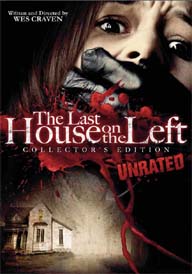 THE
LAST HOUSE ON THE LEFT (1972) Collector’s Edition (Unrated)
THE
LAST HOUSE ON THE LEFT (1972) Collector’s Edition (Unrated)Director: Wes Craven
MGM/Fox
 THE
LAST HOUSE ON THE LEFT (1972) Collector’s Edition (Unrated)
THE
LAST HOUSE ON THE LEFT (1972) Collector’s Edition (Unrated)The quintessential video nasty, LAST HOUSE ON THE LEFT is as notorious as it is unsettling. Finding mainstream success with the NIGHTMARE ON ELM STREET and SCREAM franchises, Wes Craven’s directorial debut, produced by Sean S. Cunningham (FRIDAY THE 13TH), sparked a debate over cinema violence that would captivate and infuriate audiences from the drive-in to their living rooms. Rumors of heart attacks at theatrical screenings and battles over censorship, having been banned by the BBFC from home video release in the U.K. until just last year, only added fuel to the fire, stoking controversy and discussion as to whether the film is simply a misogynistic steaming pile or a brutal reflection of its time and the harsh realities of murder. Whatever your opinion, THE LAST HOUSE ON THE LEFT is difficult to watch, hard to recommend and undeniably a cult classic.

Mari Collingwood's (Sandra Cassel) and her best friend Phyllis (Lucy
Grantham) are looking to score some dope before heading to a concert in the
big city to celebrate Mari's 17th birthday. Scoping out potential dealers, the
two girls stumble across Junior (Marc Sheffler), a young junkie who invites
them up to his place to purchase a bag of some choice “Columbian”
for $20. Foolishly, the girls take the bait and walk straight into the lair
of two recently escaped convicts and their bi-sexual girlfriend. Krug (David
Hess), a murderer who was serving a life term, and his buddy Fred aka 'Weasel',
(Fred Lincoln) a convicted child molester, having recently bailed on their court
order detention are holding up in a filthy apartment with Sadie (Jeramie Rain),
a female who is every bit as sullied as her male counterparts. The trio’s
plan to skip town are momentarily sidetracked when Krug’s illegitimate
son Junior presents the group with the two young out-of-towners as a gift in
exchange for a fix. The two girls are subsequently thrown into the trunk of
a car and driven to the country where they are humiliated, beaten, hacked, slashed,
raped and degraded in a manner that feels all too realistic. After killing both
girls, the pack of animals wash up and knock on the door of the nearest house
seeking solace. Fate is however as cruel as Krug and company, as the homeowners
turn out to be Mari’s parents. Having worried themselves sick over the
disappearance of their daughter, the two at first welcome their unexpected guests
with open arms, offering them food and shelter for the night, but when the couple
discovers their guests' involvement in their daughter's demise, their parental
worry turns to rage as they set out to avenge the death of their beloved child.
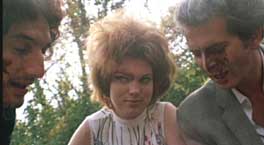 I've
seen animals slaughtered and eaten by savage cannibal tribes, zombies devour
the flesh and entrails of still screaming victims and seven different movies
directed by Brett Ratner, but for the life of me, I can't think of any film
that was more disturbing upon its initial viewing than LAST HOUSE ON THE LEFT.
The film's notoriety and box office returns would spawn a series of likeminded
torturous fare, most of which simply sought to capitalize on the familiar name
with slight variations of its title (LAST HOUSE ON DEAD END STREET, LAST HOUSE
ON THE BEACH), while others would copy the film's formula outright (NIGHT TRAIN
MURDERS). While I fully agree with the film's cult classic standing and its
position as a benchmark in horror, I can unequivocally say that I do not want
to watch it again, anytime soon. It’s been at least five years since I
last sat down to view it and even though I knew fully what to expect, it was
still every bit as unsettling and disturbing as I remembered, to the extent
that I almost felt guilty for reliving the experience. The film leaves you with
a sense that you’ve just witnessed an act against nature so horrific that
it requires notifying the authorities, and although you were merely a voyeur
to the appalling ordeal, fear of being labeled an accomplice prevents you from
picking up the phone and dialing 911.
I've
seen animals slaughtered and eaten by savage cannibal tribes, zombies devour
the flesh and entrails of still screaming victims and seven different movies
directed by Brett Ratner, but for the life of me, I can't think of any film
that was more disturbing upon its initial viewing than LAST HOUSE ON THE LEFT.
The film's notoriety and box office returns would spawn a series of likeminded
torturous fare, most of which simply sought to capitalize on the familiar name
with slight variations of its title (LAST HOUSE ON DEAD END STREET, LAST HOUSE
ON THE BEACH), while others would copy the film's formula outright (NIGHT TRAIN
MURDERS). While I fully agree with the film's cult classic standing and its
position as a benchmark in horror, I can unequivocally say that I do not want
to watch it again, anytime soon. It’s been at least five years since I
last sat down to view it and even though I knew fully what to expect, it was
still every bit as unsettling and disturbing as I remembered, to the extent
that I almost felt guilty for reliving the experience. The film leaves you with
a sense that you’ve just witnessed an act against nature so horrific that
it requires notifying the authorities, and although you were merely a voyeur
to the appalling ordeal, fear of being labeled an accomplice prevents you from
picking up the phone and dialing 911.
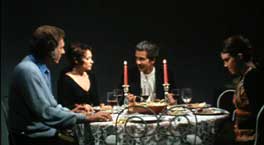
A great deal of credit is due to the cast of psychopaths for performances that are equal part amateurish and organic. David Hess in particular is extraordinarily intense as Krug, the leader of the depraved group of killers. His raw and unrefined performance adds a level of realism that pushes the already cinema vérité shooting style over the edge into mythical snuff territory. Hess’s performance was so strong that he became typecast in the role, playing similar characters in HOUSE ON THE EDGE OF THE PARK and HITCH-HIKE. Similarly, Fred Lincoln feels all too comfortable in the role of Weasel. The way he looks at his young female victims is disturbing in a way that made me want to check internet predator sites to remind myself of all the registered sexual offenders in my county. It’s these performances, coupled with camera work that never cuts away from the horrific elements but rather lingers on them, that has helped to elevate the film to its current cult status. Without these essentials it would be little more than a succession of flawed dialogue, unnecessary and unfunny comedic relief and shoddy production values.
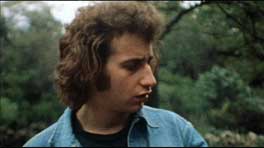 MGM
originally release LAST HOUSE ON THE LEFT on a double sided disc in 2002 that
featured the film in both widescreen and pan & scan options with a solid
host of extras. That release has recently been trumped by a three-disc ultimate
edition released in the U.K. that not only includes the restored version, found
on this and MGM’s 2002 release, but also includes the alternately titled
Krug and Company cut. Seeking to ride the wave of advertising surrounding the
film's recent remake (which is actually a remake of a remake as the original
LAST HOUSE is a re-working of Ingmar Bergman’s THE VIRGIN SPRING), MGM
and 20th Century Fox have recycled the transfer from the aforementioned 2002
release and surrounded it with different special features ported over from the
U.K. edition. Presented widescreen in a 1.85:1 aspect ratio, the transfer has
been cleaned up considerably, but the layer of grain and many of the hairs and
scratches are still intact and justly so as there are integral to the film's
seeping sense of despair and depravity. Mono audio is passable, with David Hess’s
soundtrack coming across clear, unlike most of the dialogue which is often too
distant. Subtitles are available in English, Spanish and French.
MGM
originally release LAST HOUSE ON THE LEFT on a double sided disc in 2002 that
featured the film in both widescreen and pan & scan options with a solid
host of extras. That release has recently been trumped by a three-disc ultimate
edition released in the U.K. that not only includes the restored version, found
on this and MGM’s 2002 release, but also includes the alternately titled
Krug and Company cut. Seeking to ride the wave of advertising surrounding the
film's recent remake (which is actually a remake of a remake as the original
LAST HOUSE is a re-working of Ingmar Bergman’s THE VIRGIN SPRING), MGM
and 20th Century Fox have recycled the transfer from the aforementioned 2002
release and surrounded it with different special features ported over from the
U.K. edition. Presented widescreen in a 1.85:1 aspect ratio, the transfer has
been cleaned up considerably, but the layer of grain and many of the hairs and
scratches are still intact and justly so as there are integral to the film's
seeping sense of despair and depravity. Mono audio is passable, with David Hess’s
soundtrack coming across clear, unlike most of the dialogue which is often too
distant. Subtitles are available in English, Spanish and French.

Special features include a commentary track with actors Hess, Sheffler and Lincoln that is one of the most entertaining I have ever heard. The three men shit talk their way through the film, revealing anecdotes, discussing conquests and often ribbing Sean and Wes for being such naïve young filmmakers at the time. Their banter does often comes across as a bit mean spirited, particularly from Lincoln, but the discourse feels honest and given the choice, I much prefer to watch the film with the commentary on. "Still Standing: The Legacy of The Last House on the Left" features a brand new interview with Wes Craven but provides little information that hasn’t already been covered before. The interview does however allow the director an attempt to sell fans on the justification for remaking the original. "Celluloid Crime of the Century" is a much more in-depth documentary that looks back on the film's shoot and release through interviews with Craven, Cunningham, Hess, Sheffler, Martin Kove (who played the deputy in the film) and Jeramie Rain, who, much like Edwige Fenech, has only gotten more attractive with age. "Scoring Last House" is a featurette on David Hess and his musical contributions to the film. Produced by Blue Underground, both "Celluloid" and "Scoring" are carried over from the U.K. three-disc set. Eleven minutes of footage taken from "Tales That Will Tear Your Heart Out", an aborted anthology film segment directed by Craven and starring David Hess is included, sans sound with poor picture quality. Wrapping up the extras is a one minute deleted scene featuring the Collingwood's finding Mari alive, and what is touted as “Never-Before-Seen Footage”, is five minutes of an extended lesbian rape scene, staring both Sadie and Phyllis, who is forced on top of Mari and… well, use your imagination. The footage has no audio and hints at the atrocious acts that where cut from the film's original shooting script. Enjoyable supplements all around, it’s what this release doesn't have that puzzles me.
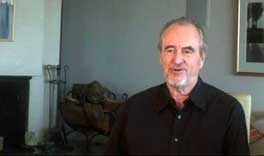 Having
gone through several title changes, from “Night Of Vengeance”, ”Sex
Crime of the Century” and “Krug & Co.” before finally
settling on one of horror cinema’s most recognizable titles, the film's
eventual ad campaign is the stuff of legends. Its tagline alone, "To avoid
fainting, keep repeating 'It's only a movie...It's only a movie...'", has
been copied and revamped time and time again, yet this release makes nearly
a mention of it. There are no theatrical trailers present, no stills gallery,
nothing. There are a handful of trailers present, but all are for contemporary
thrillers such as MR. BROOKS and PATHOLOGY. For a "Collector's Edition"
I would at the very least have hoped for a taste of the film's original ad campaign.
Having
gone through several title changes, from “Night Of Vengeance”, ”Sex
Crime of the Century” and “Krug & Co.” before finally
settling on one of horror cinema’s most recognizable titles, the film's
eventual ad campaign is the stuff of legends. Its tagline alone, "To avoid
fainting, keep repeating 'It's only a movie...It's only a movie...'", has
been copied and revamped time and time again, yet this release makes nearly
a mention of it. There are no theatrical trailers present, no stills gallery,
nothing. There are a handful of trailers present, but all are for contemporary
thrillers such as MR. BROOKS and PATHOLOGY. For a "Collector's Edition"
I would at the very least have hoped for a taste of the film's original ad campaign.
If you own the Region 2 release, I would have to recommend passing on this edition. If however you are looking to purchase the film for the first time or already own the 2002 double sided disc (which has quite a few supplements that this one doesn't, including a different featurette, different outtakes and commentary with Craven and Cunningham), I’d consider the double dip as the cast commentary alone is worth the upgrade. (Jason McElreath)